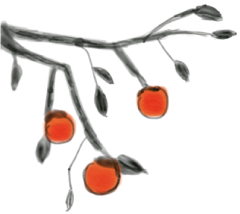


Dietary Recommendations for Yang Deficiency Constitution


Mechanism of Constitution

First, we need to understand the signs of individuals with a Yang deficiency constitution.
Yang deficiency often occurs on the basis of Qi deficiency, characterized by symptoms such as fatigue, shortness of breath, and weak pulse. Additionally, Yang deficiency is accompanied by reduced organ function and often presents with cold signs, such as aversion to cold, preference for warmth, cold extremities, abdominal pain, clear and frequent urination, pale tongue with a swollen body, and lower body temperature. Individuals with heart Yang deficiency may exhibit cold extremities, cold sweat, and a faint pulse; those with spleen Yang deficiency may experience persistent diarrhea, cold limbs, and edema; while kidney Yang deficiency is often associated with cold intolerance, lower back pain, nocturnal emissions, impotence, premature ejaculation, and frequent urination at night.
In terms of dietary nourishment, individuals with Yang deficiency should consume foods that are sweet and warm in nature to replenish Yang, and should do so gradually. It is also important to nourish Yin and avoid raw, cold, and cooling foods to prevent further damage to Yang Qi and exacerbation of organ function decline.
Recommended ingredients include warming Yang foods such as cinnamon (肉桂, Ròuguì), Sichuan pepper (花椒, Huājiāo), cloves (丁香, Dīngxiāng), shrimp (虾, Xiā), lamb (羊肉, Yángròu), leeks (韭菜, Jiǔcài), venison (鹿肉, Lùròu), chili (辣椒, Làjiāo), and yellow eel (黄鳝, Huángshàn), as well as warming foods like japonica rice (粳米, Jīngmǐ), wheat (小麦, Xiǎomài), sorghum (高粱, Gāoliang), onion (洋葱, Yángcōng), garlic (大蒜, Dàsuàn), chicken (鸡肉, Jīròu), sea cucumber (海参, Hǎishēn), hairtail fish (带鱼, Dàiyú), glutinous rice (糯米, Nuòmǐ), lentils (扁豆, Biǎndòu), jujube (大枣, Dàzǎo), bayberry (杨梅, Yángméi), apricot (杏子, Xìngzi), cherry (樱桃, Yīngtáo), longan (龙眼, Lóngyǎn), lychee (荔枝, Lìzhī), chestnut (栗子, Lìzi), pig stomach (猪肚, Zhūdù), brown sugar (赤砂糖, Chìshātáng), maltose (饴糖, Yítáng), ginger (生姜, Shēngjiāng), and fennel (茴香, Huíxiāng).
Finally, here are a few simple dietary recipes:

Dietary Methods


Yam and Cinnamon Porridge
Fresh yam (鲜山药, Xiān shānyào) 150g, cinnamon (肉桂, Ròuguì) 5g, japonica rice (粳米, Jīngmǐ) 100g. Peel and wash the yam, cut into cubes, and wrap the cinnamon in cloth. Rinse the japonica rice and set aside. Combine all ingredients in a clay pot, add appropriate water, and cook into porridge.
Walnut Porridge
Walnut (核桃仁, Hétáorén) 50g, millet (小米, Xiǎomǐ) 100g (or to taste). Cook together in a pot, adding appropriate brown sugar (红糖, Hóngtáng) for flavor.
Stir-fried Leeks with Fresh Shrimp
Leeks (韭菜, Jiǔcài) 250g, fresh shrimp (鲜虾仁, Xiān xiārén) 300g. Wash and cut the leeks into sections, chop the scallions and ginger. Heat oil in a pan, sauté the scallions and ginger until fragrant, then add shrimp and leeks, and stir-fry until the shrimp is cooked through.
Lamb Porridge
Fresh lamb (鲜羊肉, Xiān yángròu) 100g, japonica rice (粳米, Jīngmǐ) 100g. Wash the lamb and slice thinly, chop scallions and ginger. Rinse the japonica rice, and combine with lamb, scallions, ginger, and appropriate salt in a pot. Add enough water, bring to a boil, then reduce to a simmer to cook into porridge.
Longan Porridge
Longan flesh (龙眼肉, Lóngyǎn ròu) 15g, japonica rice (粳米, Jīngmǐ) 100g. Rinse the japonica rice, combine with longan flesh in a pot, bring to a boil, then reduce to a simmer to cook into porridge.
The above dietary recipes can be selected and consumed regularly based on individual conditions. Those with Yang deficiency constitution may find them beneficial.

Editor: Publicity Department


